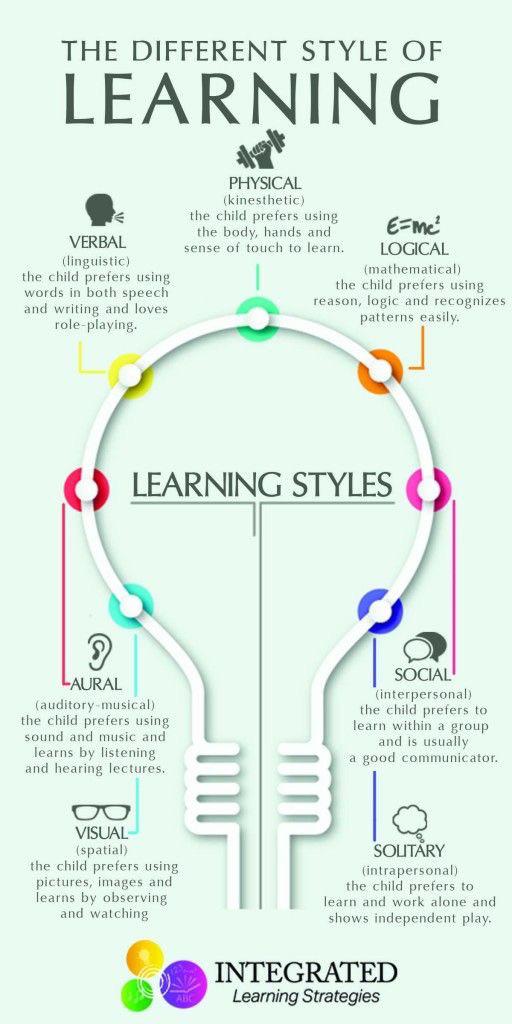
There are a lot of different ways to learn. Some people learn best by reading, others by listening, and some by doing. But there’s also another kind of learning that goes beyond just how you take in information. It’s about how you process the information you’re taking in. That’s where learning styles come into play. Learning styles are all about how your brain processes information and what it needs to be successful at learning. There are seven different learning styles, each with their own strengths and weaknesses:
1. Visual (spatial)
You prefer using pictures, images and spatial understanding. If you tend to be a visual learner, you’re good at seeing patterns, relationships and connections. You remember what you see easily too. You like to see the big picture and can take an idea apart into its separate parts. Your memory is excellent for recalling faces and places; this kind of memory is called eidetic (or photographic) memory. Visual learners like to use charts and graphs that make sense to them—they may also like diagrams or schematics that explain how things work in detail!
2. Aural (auditory-musical)
If you prefer using sound and music, you are an aural learner. Aural learners tend to be strong listeners and good at remembering things they hear. They may also enjoy talking about music, singing, or learning through listening to podcasts, audiobooks, etc. For this type of learner, Try to use audio resources as much as possible when learning something new (e.g., podcasts or YouTube videos) and If possible, arrange for someone else who can read aloud for you so that it’s easier for you to follow along with what’s being said!
3. Verbal (linguistic)
You prefer using words, both in speech and writing If you are a verbal learner, you likely are a good public speaker, are a good writer, enjoy reading and tend to talk more than listen (or vice versa).
4. Physical (kinesthetic)
If you are a physical learner, you prefer using your body, hands and sense of touch. You like to be physically active when learning new things. You don’t like lectures or reading a lot of text; instead, you would rather use your hands to learn. You might say: “I need to see it with my own eyes in order for it to sink in.” If this is your favorite learning style then you may want to try doing some hands-on experiments when learning science topics in class or take up a hobby that involves creating something with your hands such as building furniture or crafting jewelry for yourself and/or others.
5. Logical (mathematical)
You prefer using logic, reasoning and systems. You are good at math and science. You like to build things, create things, and make things work. You find it easy to understand the world in a very logical way. You love solving problems using logic and reasoning instead of by feeling your way through them as an emotional learner might do. If you’re not sure which category you fit into, try answering these questions: What types of toys did you like growing up? Did they involve building blocks or making things? Or were they more abstract—like puzzles or board games where the goal was mostly just fun?
6. Social (interpersonal):
You prefer to learn in groups or with other people Learning in groups is better than learning alone. Learning in groups can be more fun and more motivating, which helps you learn more. Learning in groups also helps you develop social skills that will benefit you later on in life (e.g., leadership, cooperation). Finally, it’s easier for students to retain information when they’re actively engaged with their peers rather than passively absorbing it from a book or other medium alone.
7. Solitary (intrapersonal)
If you prefer to work alone, spend time alone and are motivated by internal rewards, then you will likely be an introvert. This means that you have a preference for learning in solitude—or at least in a quiet place. You don’t need external stimuli or interaction with others when it comes to your learning process. If this is true of you, then it may be helpful to keep things quiet while studying. A quiet space allows you to focus on the task at hand without being distracted by background noise or other people around who might not be paying attention as much as they should be!
Knowing your learning style will help you become a better student. If you know how you learn best, then you can structure your studies around it. For example: if you’re an auditory learner and have a difficult time understanding written instructions, try using voice recordings instead of reading the manual from cover to cover. If you are an action-oriented person who learns best by doing something with their hands, take notes with sticky notes instead of writing on paper or typing on a computer (which are both considered visual activities for most people). You can use this knowledge to help others as well! For example: if one person is an auditory learner but another is more comfortable with visuals, consider sending them emails rather than leaving voicemails when calling them up about something important.
